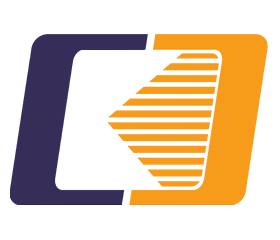The main direction of Lithuania’s long-term development is based on a knowledge-based economy, driven by the interaction between industry, science and education. This economy is conducive to the establishment and development of high-tech companies, creating high added value and creating jobs for Europe’s top professionals.
Lithuania’s laser field includes different lasers, optics, electronics, machinery, laser components, production lines, etc. Its laser physics basic and applied research has a history of about 50 years, training many top professionals. The creativity and tireless efforts of those working in the field have made Lithuanian lasers and laser component commodities desirable to import in all developed countries, and the publications of the scientists have been widely recognized and cited.
Sales of the Lithuanian laser industry grew from 29.4 million euros in 2009 to 70 million euros in 2014, and have been growing steadily in recent years, with more than 90% of the major part of production being exported — Lithuanian laser products are flying into space.
It is interesting to see Lithuanian lasers cooperating with industries as far away as Japan. In 1993, lasers were the only product Lithuania exported to Japan, and laser products now account for more than 30 percent of total exports to Japan.
Interestingly, although Lithuanian laser exports are growing, the share of this industry is actually relatively decreasing. The paradox is easy to explain: 20 years ago, no customer in Lithuania could afford a domestic laser, and everything was exported. By contrast, Lithuanian companies and research institutes can now afford world-class laser products made in Lithuania.
At first glance, the laser’s contribution to Lithuania’s gross domestic product seems small. However, in relative terms, the added value of products in the industry exceeds the industry average by almost three times.
As a new supporting industry, the size and scale of laser industry is nothing compared with the current fire of electronics, IT and information technology. However, nowadays, the development momentum of laser industry is quite fierce, in national defense, science and technology, as well as industry and agriculture, medicine has a wide range of applications. According to the trend of laser industry development and progress, the near future is bound to become the mainstream of the market and the darling of the capital. It is worth mentioning that, at present in the global scope, the master laser this is the industry to become the “fastest” knife is not Europe and the United States, but Lithuania. According to the information revealed by the industry insiders, Lithuania is the most mature manufacturer of laser technology in the world. Lithuania alone accounts for nearly 50% of the global laser market.
Data: Lithuania’s total population is only 2.8 million people. The number of Chinese cities with more than five million residents is 91, less than a tenth of Shanghai’s permanent population. In addition, Lithuania covers an area of about 65,300 square kilometers, which is smaller than Ningxia. So, how did Lithuania, such a “small country”, become a global leader in the laser industry? According to the analysis of industry experts, Lithuania can become the current global fintech center. In addition to the strong support of the government, a series of regulations and regulations favorable to fintech, the country’s developed infrastructure and business opportunities, high-quality staff team and low-cost development are all promoting factors. Above all, of course, Lithuania is not stingy when it comes to R&D investment in laser technology.
Data show that the related investment in Lithuania has exceeded 9 million euros from 2012 to 2016. A few years after the invention of the laser, Lithuania began to gain a foothold. The laser technology industry in Lithuania has a history of more than 50 years. Based on this, the famous Lithuanian laser industry has been quite good development. In the 1980s, Lithuanian laser industry successfully entered the international market. It is worth mentioning that at present, about 90% of the world’s 100 universities are using Lithuanian lasers and laser systems, which is an important customer of Lithuania.
In addition, Lithuania currently has 10% of the global market for scientific lasers and 50% of femtosecond lasers in terms of relevant market share. This is enough to prove that in the field of laser technology, Lithuania has indeed been in the forefront of the world. There is no doubt that Lithuanian laser technology is well known around the world, and Chinese universities and companies are naturally among Lithuania’s customers.
It can even be said that China’s laser technology development for Lithuania is a degree of dependence. According to the author, China has developed into Lithuania’s third largest laser technology export market, laser shipments in China’s total export trade accounted for 7%.
Lithuania’s monopoly of Chinese laser technology has naturally attracted the attention of relevant enterprises, and is also forcing the development of Chinese laser industry to a certain extent.
Suzhou Kesheng has achieved independent research and development in the core materials, systems, components and other aspects, and achieved a breakthrough in the localization rate from 30% to 95%, gradually breaking the foreign monopoly. It can be predicted that in the context of independent innovation in China, Chinese enterprises continue to make efforts to break through laser technology when the issue of time.
Post time: Nov-13-2022
